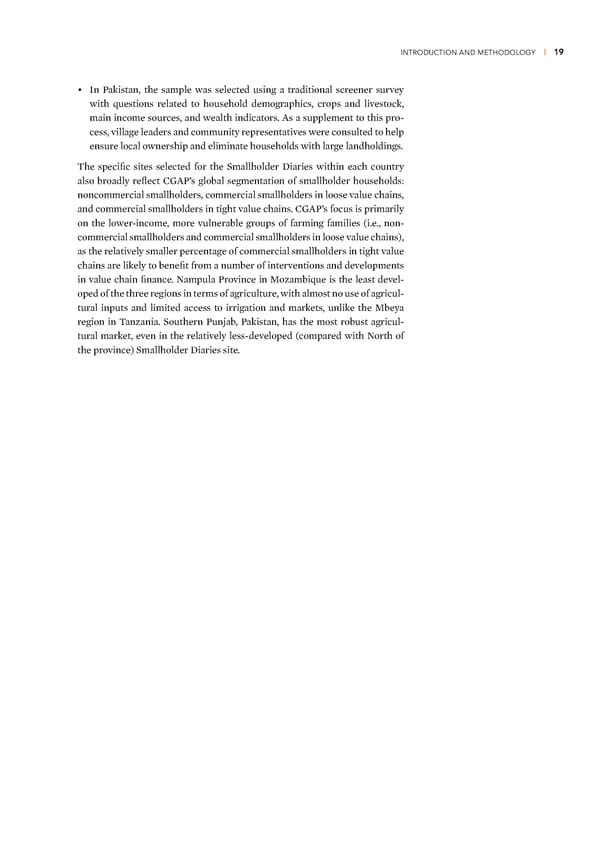INTRODUCTION AND METHODOLOGY | 19 • €n aistan, the sample was selected using a traditional screener survey with uestions related to household demographics, crops and livestoc, main income sources, and wealth indicators ˆs a supplement to this pro- cess, village leaders and community representatives were consulted to help ensure local ownership and eliminate households with large landholdings Œhe specific sites selected for the Smallholder ‰iaries within each country also broadly reflect †‡ˆ’s global segmentation of smallholder households noncommercial smallholders, commercial smallholders in loose value chains, and commercial smallholders in tight value chains †‡ˆ’s focus is primarily on the lower-income, more vulnerable groups of farming families (ie, non- commercial smallholders and commercial smallholders in loose value chains), as the relatively smaller percentage of commercial smallholders in tight value chains are liely to benefit from a number of interventions and developments in value chain finance ˜ampula rovince in –o—ambiue is the least devel- oped of the three regions in terms of agriculture, with almost no use of agricul- tural inputs and limited access to irrigation and marets, unlie the –beya region in Œan—ania Southern un„ab, aistan, has the most robust agricul- tural maret, even in the relatively less-developed (compared with ˜orth of the province) Smallholder ‰iaries site
 Financial Diaries with Smallholder Families Page 29 Page 31
Financial Diaries with Smallholder Families Page 29 Page 31